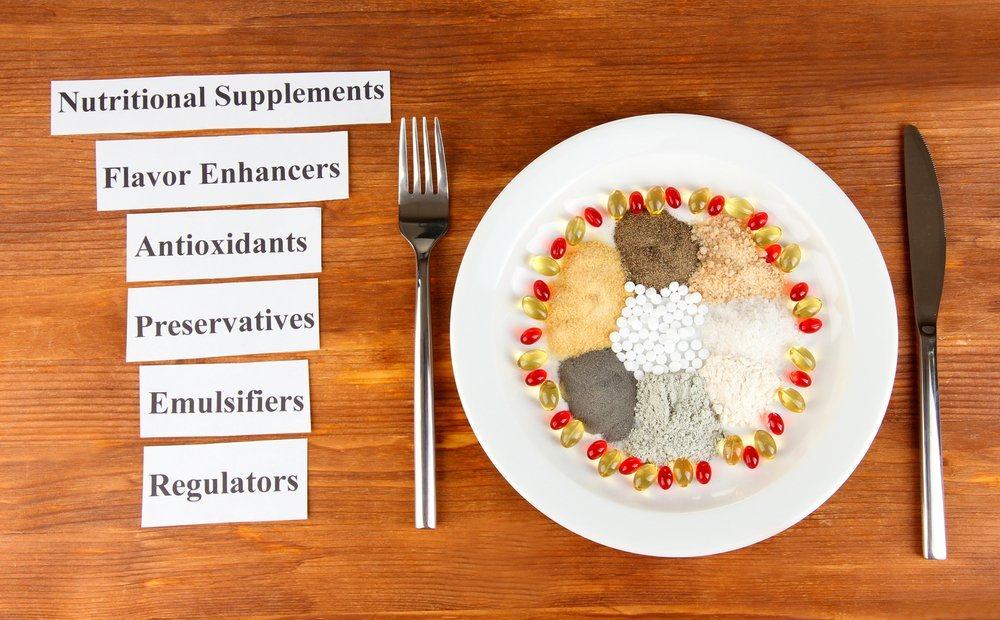Contents:
- Medical Video: 10 Foods You Should Never Eat
- What are additives?
- What are the functions of additives?
- Provides a smooth and consistent texture
- Maintain the use of food
- Control acid-base balance in food
- Give color and enhance taste
- Are additives safe?
Medical Video: 10 Foods You Should Never Eat
Additives are ingredients that are intentionally added to food to improve food quality. Can be added with coloring so the color is more attractive, flavoring can be added to make the food taste better, you can add emulsifiers so that the texture of the food is better, or add other ingredients with specific purposes.
To find out more, let's look at the following review.
What are additives?
Additives or food additives are chemicals that are added to food in order to keep food fresh or to improve the color, taste, or texture of food. Additive substances are in natural and artificial forms. Various additives are food coloring, sweeteners, flavor enhancers (such as MSG), preservatives, emulsifiers, and many more.
However, based on the Food and Drug Regulations, food additives are not included:
- Ingredients in food, such as salt, sugar, and starch
- Vitamins, minerals, and amino acids
- Seasonings, spices or flavorings
- Agricultural chemicals
- Animal medicine
- Food packaging material
If you shop for packaged food in a supermarket, you can see what food additives are contained in the packaged food in the ingredients composition column. Maybe you don't know which composition is said to be an additive because it is usually coded, but some names are also included.
What are the functions of additives?
Food additives are deliberately added to food to provide certain functions for food. Some of the main functions of food additives are:
Provides a smooth and consistent texture
This function can be found in additives in the form of:
- Emulsifier: to combine several textures of different food ingredients into one
- Stabilizers and thickener: to give more texture to food
- Anti-defensive agent: so that food does not clot
Maintain the use of food
Additives that function to maintain the usefulness of food are preservative. Preservatives can inhibit the growth of germs in food, so food is not rotten quickly. Certain preservatives can also maintain the taste of baked foods by preventing bad fats and oils.
Control acid-base balance in food
Certain additives can help change the acid-base balance in food to get a certain taste or color, such as acidity regulator. Additions the developer in food can also release acid, so that when food is heated, it can make food, such as biscuits, cakes, and other baked foods to expand.
Give color and enhance taste
Dye accidentally added to certain foods can make food color attractive. While, taste can also be added to food to produce a strong taste in the food.
The function of other food additives, namely to prevent oxidative damage to food (antioxidant), adding sweetness available in food without adding calories (sweetener), increases feeding thickness (thickener), reduce loss of moisture in food (humectant), and many other food additives.
Are additives safe?
Many additives used by the food industry are also found in certain foods as natural ingredients contained in them. For example, MSG, which is found naturally in parmesan cheese, sardines, and tomatoes in larger quantities compared to MSG, which is found as food additives in food.
Some people might assume that all food additives are dangerous, but that is not true. Additive substances are declared safe for consumption in certain quantities. In Indonesia alone, the use of additives has been regulated by BPOM (Food and Drug Monitoring Agency). BPOM guarantees food additives safe to use in food.
Some people may be sensitive to certain food additives, they can cause allergic reactions, such as itching or diarrhea. However, this cannot be generalized to all food additives.
Some food additives that might cause problems in some people are:
- Flavor enhancers, such as monosodium glutamate (MSG) 621
- Food coloring, such as tartrazine 102, yellow 2G107, sunset yellow FCF110, cochineal 120
- Preservatives, such as benzoates 210, 211, 212, and 213, nitrates 249, 250, 251, 252, sulfites 220, 221, 222, 223, 224, 225, and 228
- Artificial sweeteners, such as aspartame 951
READ ALSO
- Prevent and Overcome Sweet Food Addiction
- How to Read the Nutritional Value Information Label on Food Packaging
- Hidden Allergens in Your Food












